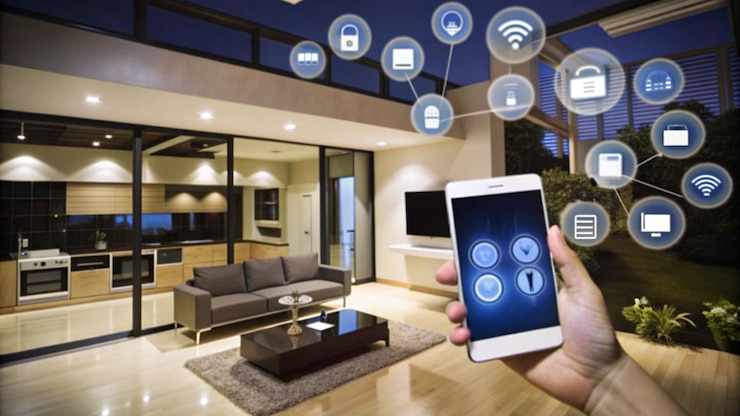The real estate market in 2025 is experiencing a profound transformation, driven by the rapid adoption of smart home technology. What was once considered a luxury is now a standard expectation among buyers, renters, and investors. As technology continues to evolve, smart homes are reshaping not only how we live, but also how properties are valued, marketed, and managed.
What Defines a Smart Home in 2025?
A smart home is equipped with interconnected devices and systems—such as lighting, security, climate control, and appliances—that can be remotely managed via smartphones, tablets, or voice commands. These devices are powered by the Internet of Things (IoT), enabling seamless automation and real-time control of home environments.
Key features of today’s smart homes include:
- Voice assistants and AI-powered hubs for centralized control
- Facial recognition entry systems and smart locks for enhanced security
- Sensor-based lighting and AI-driven climate management for efficiency
- Energy-monitoring dashboards and self-cleaning technologies for convenience
Why Are Buyers Demanding Smart Homes?
Convenience, security, and sustainability are at the heart of the Smart home real estate
movement. Homebuyers are drawn to properties that offer remote access and automation, allowing them to control lighting, appliances, and security systems from anywhere. Enhanced safety features like real-time surveillance and automated locks provide peace of mind. Energy efficiency is another major draw, with smart thermostats, lighting, and appliances optimizing energy use and reducing utility bills.
These benefits are particularly appealing to millennial and Gen Z buyers, who view smart features as essential rather than optional.

The Impact on Real Estate Value and Marketing
Smart home features are now major selling points in real estate listings. Properties equipped with the latest technology often command higher prices and sell faster. Developers and sellers are increasingly investing in smart staging—demonstrating integrated technology during showings to highlight a home’s adaptability and intelligence.
Buyers are also seeking personalized automation. Customizable smart systems allow residents to tailor lighting, climate, and entertainment to their unique preferences, further enhancing a property’s appeal.
Smart Communities: Beyond Individual Homes
The influence of smart technology extends to entire neighborhoods and communities. Modern developments now offer smart parks and app-controlled amenities, tech-enabled security gates, community-wide energy management systems, and IoT infrastructure for seamless connectivity. These features not only improve quality of life but also foster a sense of safety and community among residents.
PropTech: The Backbone of the Smart Real Estate Market
The rise of Property Technology (PropTech) is fueling this revolution. AI-driven platforms now handle everything from personalized property recommendations to automated risk assessments and virtual home tours. Blockchain ensures secure, transparent transactions, while cloud-based tools streamline property management and tenant communications.
For real estate professionals, these innovations mean faster, smarter transactions, accurate property valuations, efficient property management, and enhanced customer experiences.
Sustainability and the Future
Smart homes are not just about convenience—they’re key to sustainable living. Automated systems reduce energy waste, while features like rooftop solar, smart grids, and energy-monitoring thermostats help lower utility bills and carbon footprints. As environmental consciousness grows, the demand for eco-friendly smart homes will only intensify.
Conclusion
The smart home revolution is redefining the real estate landscape in 2025. With technology now central to modern living, buyers and renters expect homes that are intelligent, secure, and sustainable. For sellers, developers, and agents, embracing smart home integration isn’t just a trend—it’s a necessity for staying competitive in today’s dynamic market.



